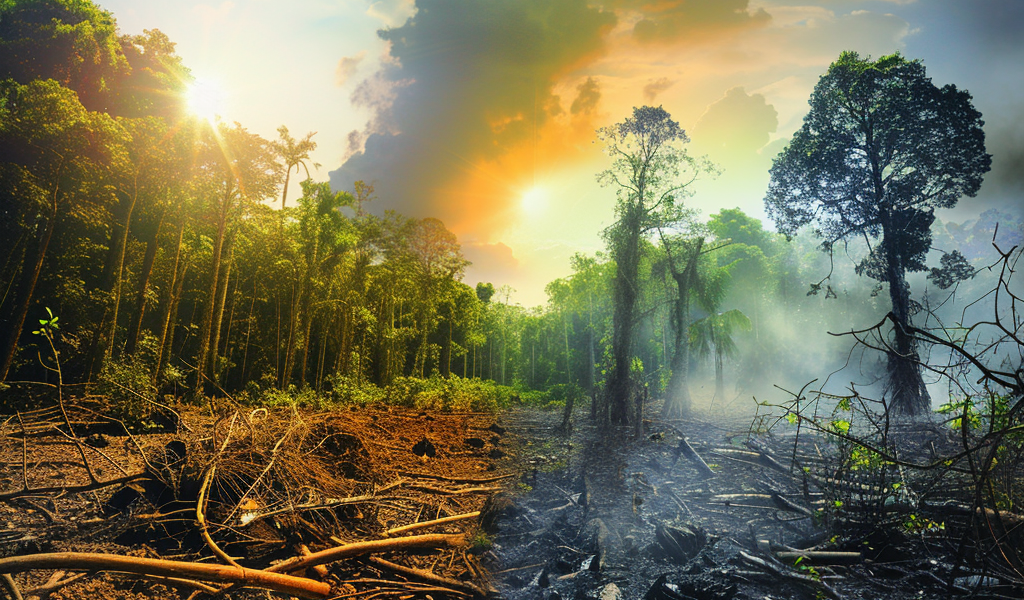Recent studies have revealed a concerning trend in the ability of natural ecosystems to absorb carbon dioxide (CO2), with trees and land absorbing almost no CO2 in the previous year. This unexpected development has left scientists puzzled as they strive to understand the underlying causes.
Carbon sinks, which include forests, oceans, and soils, play a crucial role in regulating the Earth’s climate. They are responsible for absorbing nearly half of all human carbon emissions from the atmosphere through natural processes. However, preliminary data from 2023, which has been noted as the hottest year on record, indicates that the capacity of these ecosystems to absorb carbon has significantly declined.
Research findings show that forests, plants, and soil, when considered as a net category, absorbed almost no CO2 last year. This decline was entirely unforeseen and was not accounted for in many climate predictions and calculations regarding the pace of global warming due to climate change.
The destabilization of ecosystems, driven by rising temperatures, extreme weather events, and prolonged droughts, has pushed natural carbon sinks into uncharted territory. While the breakdown of land carbon sinks may be a temporary phenomenon, scientists warn that if this trend continues, it could accelerate the rate of global warming dramatically.
In 2023, global energy-related CO2 emissions reached an all-time high of 37.4 billion tonnes, further complicating efforts to combat climate change. The reliance on carbon sinks is critical for achieving net-zero emissions, as current human technology cannot match the carbon absorption capabilities of the world’s forests, grasslands, peat bogs, and oceans.
The situation is not limited to terrestrial carbon sinks. The melting of Greenland’s glaciers and Arctic ice sheets is occurring at an alarming rate, disrupting the Gulf Stream, which in turn affects the ocean’s ability to absorb carbon. Additionally, the melting sea ice is exposing zooplankton to increased sunlight. These organisms typically rise to the ocean’s surface at night to feed on microscopic algae, contributing to the removal of millions of tonnes of carbon from the atmosphere each year. However, with more sunlight exposure, there is a risk that zooplankton may remain in deeper waters longer, disrupting their feeding patterns and ultimately affecting carbon storage on the ocean floor.
During New York Climate Week in September, Johan Rockström, the director of the Potsdam Institute for Climate Impact Research, highlighted the growing vulnerabilities within Earth’s systems. He noted, “We’re seeing cracks in the resilience of the Earth’s systems,” emphasizing the urgent need for action to address these alarming changes.
As the world grapples with the implications of these findings, the urgency for comprehensive climate action has never been more pronounced. The interplay between natural carbon sinks and human activities remains a critical area of focus for scientists and policymakers alike, as they seek to navigate the complexities of climate change and its impacts on global ecosystems.
In light of these developments, it is essential for governments, organizations, and individuals to prioritize sustainable practices and invest in the preservation and restoration of natural ecosystems. By enhancing the resilience of carbon sinks, society can play a pivotal role in mitigating the effects of climate change and securing a healthier planet for future generations.
As we move forward, continued research and monitoring of carbon sinks will be vital in understanding their dynamics and developing effective strategies to combat climate change. The collaboration between scientific communities, policymakers, and the public is crucial in fostering a comprehensive approach to environmental stewardship and climate resilience.





